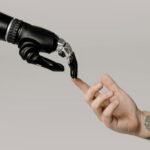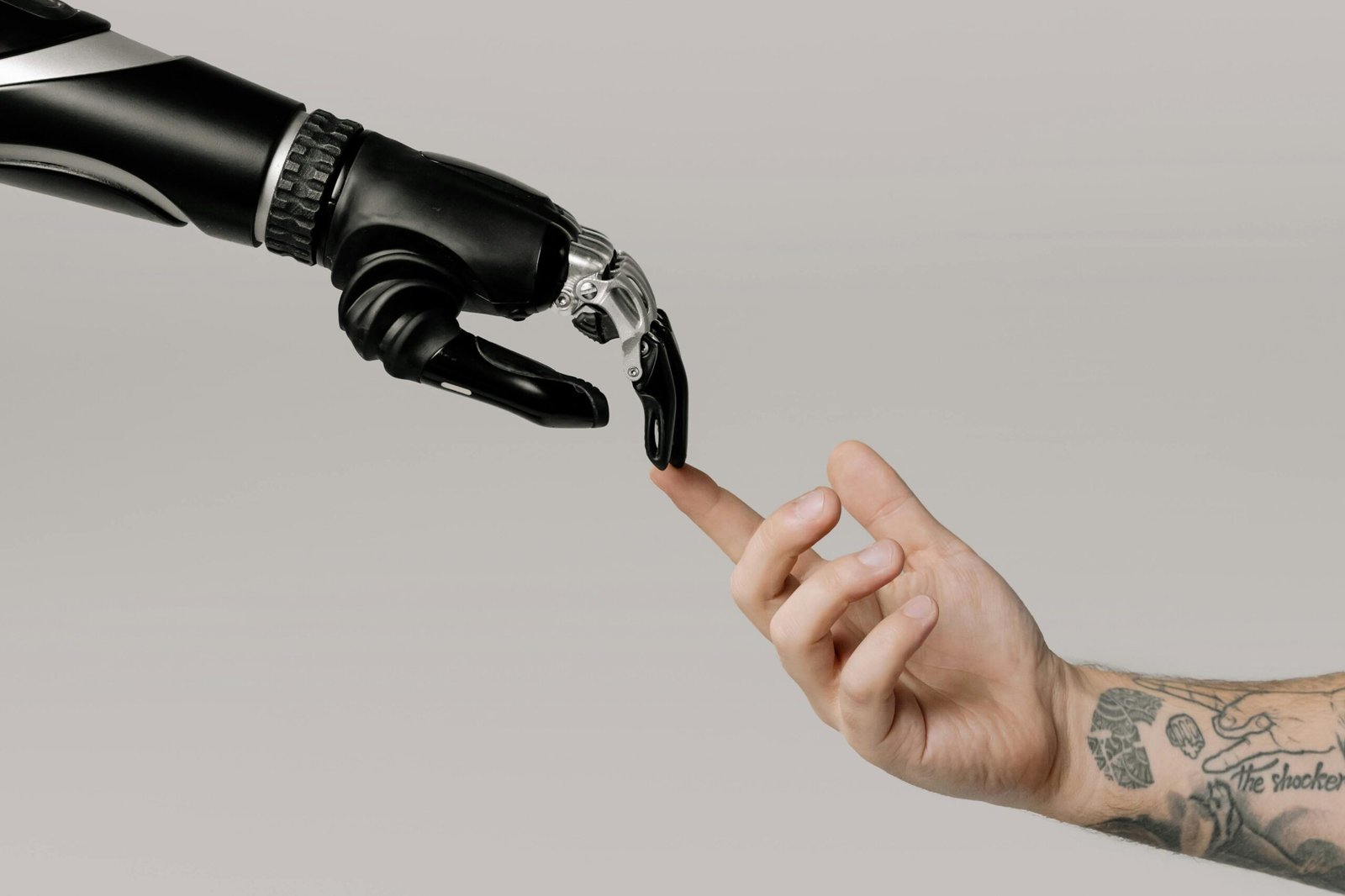Artificial Intelligence and Machine Learning Applications

Introduction
Artificial Intelligence (AI) and Machine Learning (ML) are no longer the realms of science fiction. They are rapidly transforming various industries, creating opportunities for innovation and efficiency that were once unimaginable. AI refers to the simulation of human intelligence in machines, while ML, a subset of AI, involves the development of algorithms that allow computers to learn from and make predictions based on data. This article explores the extensive applications of AI and ML across different sectors, highlighting their transformative potential and the challenges they bring.
Outline
1. AI and ML in Healthcare
– Diagnostics and Imaging
– Personalized Medicine
– Drug Discovery
– Case Study: AI in Cancer Detection
2. AI and ML in Finance
– Fraud Detection
– Algorithmic Trading
– Risk Management
– Case Study: AI in Credit Scoring
3. AI and ML in Retail
– Customer Personalization
– Inventory Management
– Supply Chain Optimization
– Case Study: AI in E-commerce
4. AI and ML in Transportation
– Autonomous Vehicles
– Traffic Management
– Predictive Maintenance
– Case Study: AI in Fleet Management
5. AI and ML in Manufacturing
– Predictive Maintenance
– Quality Control
– Supply Chain Optimization
– Case Study: AI in Smart Factories
6. AI and ML in Education
– Personalized Learning
– Administrative Efficiency
– Predictive Analytics for Student Success
– Case Study: AI in Online Education Platforms
7. Challenges and Ethical Considerations
– Data Privacy and Security
– Bias and Fairness
– Job Displacement
– Regulatory Frameworks
8. Future Prospects of AI and ML
AI and ML in Healthcare
Diagnostics and Imaging
AI and ML are revolutionizing medical diagnostics and imaging by enhancing accuracy and speed. Algorithms can analyze medical images such as X-rays, CT scans, and MRIs to detect anomalies with high precision. These technologies assist radiologists by highlighting potential areas of concern, leading to earlier and more accurate diagnoses. For instance, Google’s DeepMind has developed AI systems capable of diagnosing eye diseases from retinal scans with remarkable accuracy, matching that of expert ophthalmologists.
Personalized Medicine
Personalized medicine involves tailoring medical treatment to the individual characteristics of each patient. AI and ML facilitate this by analyzing vast amounts of genetic, environmental, and lifestyle data. By identifying patterns and correlations, AI can predict how different patients will respond to specific treatments, allowing for customized treatment plans that maximize efficacy and minimize side effects. IBM Watson, for example, uses AI to recommend personalized cancer treatment options by analyzing a patient’s genetic profile and relevant medical literature.

Drug Discovery
The process of drug discovery is traditionally lengthy and expensive. AI and ML can significantly accelerate this process by predicting the efficacy of potential drug compounds and identifying promising candidates for further testing. These technologies analyze biochemical data to simulate how different molecules will interact with target proteins, reducing the need for extensive laboratory experiments. AI-driven platforms like Atomwise and BenevolentAI are at the forefront of using ML for drug discovery, leading to faster development of new medications.
Case Study: AI in Cancer Detection
AI has shown tremendous promise in the early detection of cancer. Google’s AI system for breast cancer detection, for example, has outperformed human radiologists in identifying cancerous tissues in mammograms. The system reduces false positives and false negatives, leading to earlier and more accurate diagnoses. Similarly, PathAI’s machine learning algorithms assist pathologists in diagnosing cancer from tissue samples with higher precision, ensuring that patients receive timely and appropriate treatment.
AI and ML in Finance
Fraud Detection
Fraud detection is a critical application of AI and ML in the financial sector. Traditional rule-based systems struggle to keep up with the evolving tactics of fraudsters. AI-powered systems, however, can analyze vast amounts of transaction data in real-time to detect suspicious activities and anomalies. These systems learn from historical data to identify patterns indicative of fraud, enabling faster and more accurate detection. Companies like Darktrace use AI to monitor network traffic and detect cyber threats in real-time, providing robust security for financial institutions.
Algorithmic Trading
Algorithmic trading uses AI and ML to develop trading strategies that maximize returns. These algorithms analyze market data, news, and other relevant information to make informed trading decisions at high speeds. By identifying patterns and trends, AI can execute trades more efficiently and effectively than human traders. Quantitative hedge funds, such as Renaissance Technologies, leverage machine learning to develop sophisticated trading algorithms that consistently outperform traditional investment strategies.
Risk Management
AI and ML are transforming risk management by providing more accurate and comprehensive risk assessments. These technologies analyze diverse data sources, including financial statements, market trends, and geopolitical events, to predict potential risks and their impact. This enables financial institutions to make more informed decisions and mitigate risks more effectively. For instance, AI-driven risk management platforms can predict credit default risks by analyzing a borrower’s financial behavior and macroeconomic indicators.
Case Study: AI in Credit Scoring
Traditional credit scoring models rely on a limited set of data points, often excluding large segments of the population. AI and ML can provide more inclusive and accurate credit scoring by analyzing alternative data sources, such as social media activity, transaction history, and online behavior. ZestFinance, for example, uses machine learning to assess creditworthiness, allowing lenders to extend credit to individuals with little or no credit history while maintaining low default rates.
AI and ML in Retail
Customer Personalization
AI and ML enable retailers to offer personalized shopping experiences by analyzing customer data, including purchase history, browsing behavior, and preferences. These technologies can recommend products, tailor marketing messages, and optimize pricing strategies to enhance customer satisfaction and loyalty. Amazon’s recommendation engine, which uses ML to suggest products based on a customer’s browsing and purchase history, is a prime example of how personalization can drive sales and customer engagement.
Inventory Management
Efficient inventory management is crucial for retail success. AI and ML can predict demand, optimize stock levels, and reduce inventory costs by analyzing sales data, market trends, and external factors such as weather patterns. These predictive capabilities help retailers avoid stockouts and overstock situations, ensuring that the right products are available at the right time. Walmart, for example, uses AI to manage its vast inventory, improving efficiency and reducing waste.
Supply Chain Optimization
AI and ML enhance supply chain management by optimizing logistics, reducing lead times, and improving supply chain visibility. These technologies can predict disruptions, optimize routes, and manage supplier relationships, leading to more efficient and resilient supply chains. AI-powered platforms like Llamasoft provide retailers with advanced analytics and insights to streamline their supply chain operations, resulting in cost savings and improved service levels.
Case Study: AI in E-commerce
E-commerce giants like Alibaba and Amazon leverage AI and ML to enhance various aspects of their operations. Alibaba’s AI-driven customer service bots handle millions of inquiries, providing instant and accurate responses. Amazon’s AI-powered logistics network optimizes delivery routes and schedules, ensuring timely and cost-effective delivery. These applications demonstrate how AI and ML can drive efficiency and customer satisfaction in the e-commerce sector.
AI and ML in Transportation
Autonomous Vehicles
One of the most transformative applications of AI and ML in transportation is the development of autonomous vehicles. Self-driving cars use AI algorithms to process data from sensors, cameras, and GPS to navigate and make real-time decisions. These vehicles have the potential to reduce traffic accidents, improve fuel efficiency, and provide greater mobility for individuals who are unable to drive. Companies like Tesla, Waymo, and Uber are at the forefront of developing autonomous driving technologies.
Traffic Management
AI and ML can optimize traffic flow and reduce congestion by analyzing real-time traffic data and predicting traffic patterns. These technologies enable dynamic traffic light control, adaptive signal timing, and efficient route planning. Cities like Los Angeles and Singapore use AI-powered traffic management systems to monitor and manage traffic in real-time, resulting in smoother traffic flow and reduced travel times.

Predictive Maintenance
In the transportation sector, predictive maintenance involves using AI and ML to predict when vehicles or infrastructure components are likely to fail. By analyzing data from sensors and historical maintenance records, these technologies can identify potential issues before they become critical, reducing downtime and maintenance costs. Airlines and logistics companies use predictive maintenance to ensure the reliability and safety of their fleets.
Case Study: AI in Fleet Management
AI and ML are revolutionizing fleet management by optimizing routes, monitoring driver behavior, and predicting maintenance needs. Companies like Geotab use AI to analyze data from GPS trackers and onboard sensors, providing fleet managers with insights to improve efficiency and safety. These systems can recommend the most fuel-efficient routes, identify risky driving behaviors, and schedule maintenance proactively, leading to significant cost savings and operational improvements.
AI and ML in Manufacturing
Predictive Maintenance
In manufacturing, predictive maintenance powered by AI and ML can minimize downtime and reduce maintenance costs. By analyzing data from machinery and equipment, AI algorithms can predict when a component is likely to fail and recommend preventive maintenance. This proactive approach ensures that machinery operates at peak efficiency and reduces the risk of unexpected breakdowns. General Electric uses AI-driven predictive maintenance to monitor its industrial equipment, resulting in significant cost savings and improved reliability.
Quality Control
AI and ML enhance quality control in manufacturing by automating the inspection process and detecting defects with high accuracy. These technologies use computer vision and deep learning algorithms to analyze images of products and identify imperfections that may not be visible to the human eye. Companies like Landing AI provide AI-powered quality control solutions that help manufacturers maintain high product quality and reduce waste.
Supply Chain Optimization
AI and ML optimize supply chain operations in manufacturing by improving demand forecasting, inventory management, and logistics. These technologies analyze historical data, market trends, and external factors to predict demand accurately and optimize supply chain processes. Siemens uses AI-driven supply chain optimization to enhance its manufacturing operations, resulting in reduced lead times and increased efficiency
.
Case Study: AI in Smart Factories
Smart factories leverage AI and ML to automate and optimize various aspects of the manufacturing process. Companies like Bosch and Siemens use AI to monitor production lines, optimize workflows, and improve product quality. These smart factories use sensors, IoT devices, and AI algorithms to create a connected and intelligent manufacturing environment, leading to increased productivity and reduced operational costs.
AI and ML in Education
Personalized Learning
AI and ML are transforming education by enabling personalized learning experiences. These technologies analyze student data, including learning styles, strengths, and weaknesses, to create customized learning paths. Personalized learning platforms like DreamBox and Knewton use AI to adapt instructional content and provide real-time feedback, helping students learn more effectively and at their own pace.
Administrative Efficiency
AI and ML streamline administrative tasks in educational institutions, reducing the burden on staff and improving efficiency. These technologies can automate tasks such as enrollment, grading, and scheduling, allowing educators to focus more on teaching and student support. AI-powered chatbots can handle student inquiries and provide instant assistance, enhancing the overall student experience.
Predictive Analytics for Student Success
Predictive analytics powered by AI and ML can identify students at risk of falling behind or dropping out by analyzing various data points, including attendance, grades, and engagement. These insights enable educators to intervene early and provide targeted support to improve student outcomes. Universities and colleges use AI-driven predictive analytics to enhance student retention and success rates.
Case Study: AI in Online Education Platforms
Online education platforms like Coursera and edX use AI and ML to enhance the learning experience. These platforms use AI to recommend courses, provide personalized feedback, and create adaptive learning paths. AI-powered analytics help educators understand student behavior and improve course content, resulting in a more engaging and effective learning environment.
Challenges and Ethical Considerations
Data Privacy and Security
The use of AI and ML involves the collection and analysis of vast amounts of data, raising concerns about data privacy and security. Ensuring that sensitive information is protected and used ethically is crucial. Organizations must implement robust data protection measures and comply with regulations such as GDPR and CCPA to safeguard user data.
Bias and Fairness
AI and ML algorithms can inadvertently perpetuate biases present in the training data, leading to unfair outcomes. Ensuring fairness and mitigating bias in AI systems is a significant challenge. Researchers and developers must prioritize transparency, fairness, and accountability in AI development to prevent discrimination and ensure equitable outcomes.
Job Displacement
The automation potential of AI and ML raises concerns about job displacement and the future of work. While these technologies create new opportunities, they also threaten to displace workers in various industries. Policymakers, educators, and businesses must work together to reskill and upskill the workforce to adapt to the changing job landscape.
Regulatory Frameworks
The rapid advancement of AI and ML necessitates the development of comprehensive regulatory frameworks to address ethical, legal, and societal implications. Governments and international bodies must collaborate to create policies that promote innovation while ensuring the responsible and ethical use of AI technologies.
Future Prospects of AI and ML
The future of AI and ML holds immense potential for further transformation across various sectors. Continued advancements in these technologies will lead to more sophisticated applications, improved efficiency, and enhanced human experiences. As AI and ML become increasingly integrated into our daily lives, it is essential to navigate the associated challenges and ethical considerations to ensure that these technologies benefit society as a whole.
Conclusion
In conclusion, AI and ML are driving innovation and transforming industries worldwide. Their applications in healthcare, finance, retail, transportation, manufacturing, and education demonstrate their transformative potential. However, addressing the associated challenges and ethical considerations is crucial to harnessing the full potential of these technologies. By embracing AI and ML responsibly, we can create a future that is more efficient, equitable, and prosperous.










